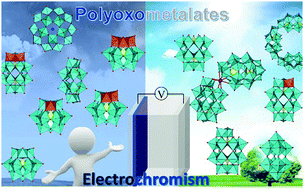Polyoxometalates as promising materials for electrochromic devices
Abstract
Polyoxometalates (POMs) can act as an electron reservoir, giving rise to mixed-valence colored state species without their structural changes. This unique feature of POMs has led to the development of POM-based electrochromic devices (ECDs), which show several advantages over organic and inorganic material-based ECDs. For example, the EC properties of POMs can be tuned through molecular design. Furthermore, POMs show high chemical and UV stabilities. In this review, POM structures and the preparation methods for the EC films of POMs were comprehensively introduced. To avoid the dissolution of POM films in electrolyte media or to prepare a homogeneous transparent POM film, a stabilizer was introduced. Several types of stabilizers, including ionic types and carbon materials, were also reviewed for POM films. The EC properties of POMs depend primarily on their structural diversity. Thus, we reviewed the EC properties of different POM films prepared from diverse structures. In addition, we described the EC properties of the POM films that were obtained via different preparation methods and exhibited different morphologies. Furthermore, several types of POM-based ECDs were introduced so that not only electrochromic functions but also capacitive functions could be integrated in the ECD. This review may be of interest to researchers in the ECD field devoted to improving the material stability, optical contrast, and design of new POM structures as well as those engaged in the extension of POMs to functional materials.

- This article is part of the themed collection: Research presented at the International Conference on Emerging Advanced Nanomaterials (ICEAN) 2018


 Please wait while we load your content...
Please wait while we load your content...